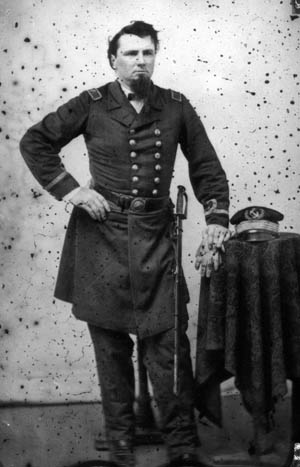Wrangell Bombardment facts for kids
Quick facts for kids Wrangell Bombardment |
|||||||
|---|---|---|---|---|---|---|---|
 View of Fort Wrangell under construction in background, Stikine in foreground, 1868 |
|||||||
|
|||||||
| Belligerents | |||||||
| Commanders and leaders | |||||||
|
|||||||
| Units involved | |||||||
| Detachment from Battery I, 2nd Regiment of Artillery | Irregular force of Stikine villagers, armed with muskets, spears, pistols. | ||||||
| Strength | |||||||
| 26 soldiers, log wall fort, 12-pounder mountain howitzer, 6-pounder cannon | 508 villagers | ||||||
| Casualties and losses | |||||||
|
|
||||||
The Wrangell Bombardment was the bombardment of the Stikine village of Old Wrangell (Tlingit: Ḵaachx̱aana.áakʼw) by the United States Army in 1869. The army issued an ultimatum to the villagers, demanding they deliver a Stikine named Scutd-doo to justice following the retribution murder of Leon Smith by Scutd-doo. Scutd-doo's son, Lowan, had earlier been killed by soldiers following an altercation in which he bit off a finger of the wife of the quartermaster of Fort Wrangell.
Following a two-day bombardment of the village and return musket fire by Stikine skirmishers, Scutd-doo was handed over to the army, court-martialed, and in the first application of the death penalty in Alaska under U.S. rule, was hanged before the garrison and Stikine villagers.
Aftermath
Smith's body was transferred for burial in San Francisco, and possibly onward to Texas in the city cemetery in Houston.
Following press coverage, a full report on the bombardment was presented in 1870 to the President and the Congress by the secretary of the Board of Indian Commissioners, Vincent Colyer. The report contained the reports of the Secretary of War, and the Secretary of the Interior.
Subsequent legal interpretation found that the army did not have the legal authority to try civilians in a court-martial and sentence them to death in the Department of Alaska.
A similar incident in October 1882, the Angoon Bombardment, led to the destruction of Angoon, Alaska by US Naval forces, after the Angoon Tlingit demanded compensation and took white hostages following the accidental death of a shaman who was working on a whaling ship.
The incident was one of several short, but violent, clashes between the Tlingit and occupying soldiers – sparked at least in part by cultural misunderstandings. Russell Estlack argued that after the army departed Alaska in 1887, its "dismal record during the occupation was mainly the punishment of Indians for quarrels the soldiers initiated by their own acts."


